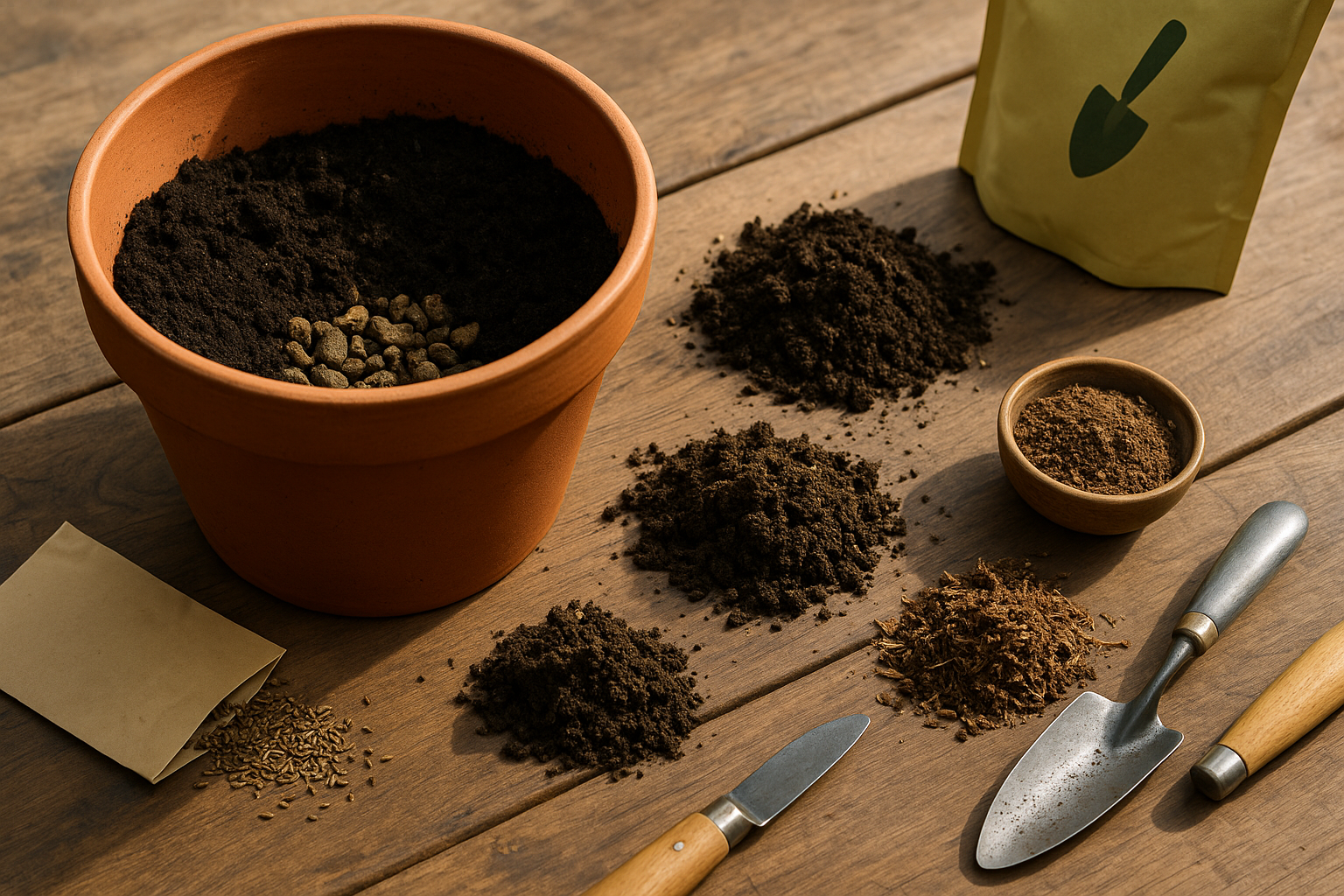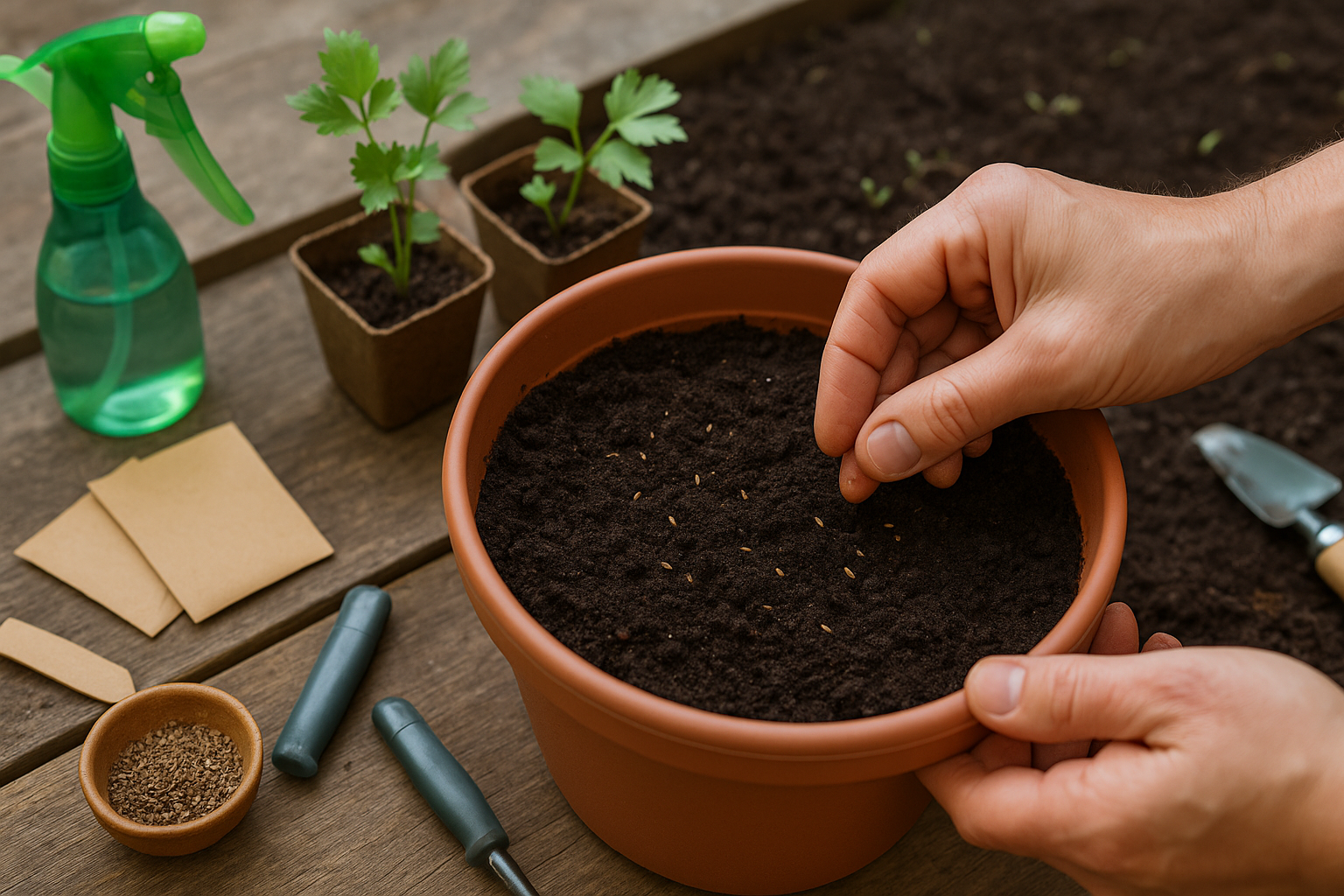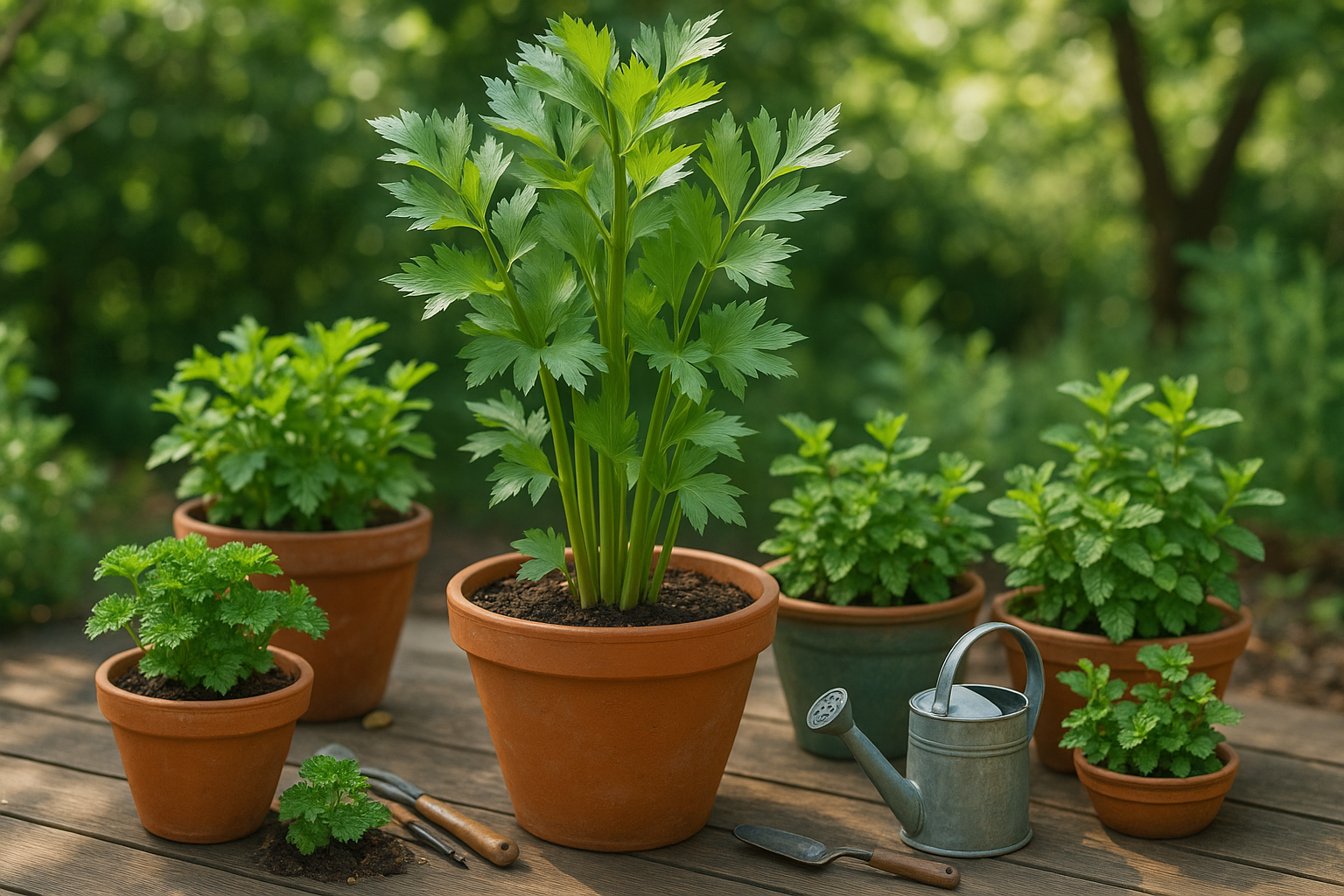Why Grow Lovage in Pots?
Lovage is an impressive, lesser-known herb that adds both flavor and beauty to your garden. With its celery-like stalks and aromatic leaves, lovage enhances soups, stews, and salads, while its tall, feathery foliage and yellow-green blooms bring a lush, ornamental touch to patios or balconies.
Growing lovage in pots is a smart choice, especially if you’re short on garden space or want to keep this vigorous herb under control. Container gardening lets you manage soil quality, ensuring lovage thrives in rich, well-draining compost—no more struggling with poor native soil or competing roots.
Plus, pots make it easy to move lovage to sunnier spots as needed and to monitor pests closely since you can isolate the plant if problems arise. Compared to planting directly in the ground, pots prevent lovage from taking over your garden, as it tends to spread rapidly if left unchecked.
In small urban yards or apartment balconies, containers let you enjoy fresh lovage without needing a dedicated herb bed. Even gardeners with ample outdoor space appreciate pots for their flexibility and easier maintenance.
Whether you’re a novice or seasoned gardener, growing lovage in pots offers a practical and attractive way to add this flavorful herb to your kitchen and container garden.
Choosing the Right Pot and Soil

Picking the right pot and soil is key to growing healthy lovage at home. Since lovage grows a deep taproot, choose a container that’s at least 12 to 16 inches deep and wide enough to give the roots space. Terracotta or unglazed ceramic pots are great options because they breathe, helping moisture evaporate and preventing root rot.
Make sure the pot has several drainage holes in the bottom—this is non-negotiable, as lovage hates soggy feet. For extra insurance, scatter a layer of small stones or gravel at the bottom before adding soil to boost drainage.
When it comes to soil, lovage loves rich, loamy potting mix that drains well but still holds enough moisture. Pick a high-quality, peat-free potting soil and blend in a couple of handfuls of compost or aged manure for added nutrition. Aim for a neutral to slightly alkaline pH—anywhere from 6.5 to 7.5 is ideal. Avoid garden soil, which compacts in containers and can harbor pests.
Before planting, sprinkle in a slow-release organic fertilizer to give your lovage a strong start. Water thoroughly after you plant, then place the pot where it’ll get at least six hours of sun. Check drainage after the first watering; if water pools at the bottom, poke extra holes or elevate the pot to keep roots healthy.
Sowing and Planting Lovage in Containers

Starting lovage in containers is a rewarding way to add fresh, aromatic leaves to your culinary garden. You can begin with seeds or young transplants; seeds are cost-effective and widely available, while transplants offer a quicker harvest.
For best results, sow lovage seeds in early spring, once daytime temperatures consistently stay above 15°C (60°F), and place containers in a spot that gets at least six hours of sunlight daily. Use a deep container—at least 12 inches—to accommodate lovage’s long taproot, filling it with a rich, well-draining potting mix.
If sowing seeds, press them lightly into the soil about 1/4 inch deep, spacing them two inches apart. Later, thin them to one strong seedling per pot or one every eight inches in larger planters. Keep the soil evenly moist but not soggy; a gentle misting works best until seeds sprout in two to three weeks.
If using transplants, set each one at the same soil level as it was in its nursery pot, and water thoroughly after planting to help settle the roots. Remember to avoid letting containers dry out, especially in warmer weather, and rotate pots as needed to ensure balanced sun exposure.
These simple steps will help you grow lush, healthy lovage that’s ready to enhance your favorite dishes all season long.
Caring for Container-Grown Lovage
Lovage thrives in a spot that receives at least 6 hours of sun daily, though a bit of afternoon shade can help prevent wilting during the summer heat. Water consistently, keeping the soil evenly moist but not soggy—stick your finger in the soil; if the top inch is dry, it’s time to water. Container-grown lovage needs more frequent watering than plants in the ground, especially during hot months.
Feed your lovage every 4-6 weeks with a balanced liquid fertilizer, or mix in slow-release organic fertilizer at planting time. Look for formulas rich in nitrogen to encourage lush, leafy growth and a bit of phosphorus for healthy root development.
Snip off flower stalks as soon as they appear to preserve tender leaf flavor, and harvest stems regularly to encourage bushiness. If stems get leggy or unruly, don’t hesitate to prune them back by a third; this keeps the plant compact and fresh.
Aphids and spider mites sometimes show up, especially in warm, dry weather—use a strong blast of water or spray with insecticidal soap to manage infestations. Watch for powdery mildew, which can appear if airflow is poor; thin out crowded stems and water at the soil level to help prevent it.
Keeping the area tidy by removing fallen debris and giving your lovage plenty of space for air to circulate will help avoid most problems, allowing you to enjoy healthy, aromatic leaves all season long.
Harvesting and Using Lovage
To get the best flavor from your lovage plant, harvest the leaves early in the morning when their essential oils are most concentrated and before the plant flowers for peak taste. Snip outer leaves and stems with clean scissors, leaving the center growth untouched so the plant continues producing.
If you want young, tender stems, cut them low on the plant but always above a leaf node to encourage bushier regrowth. As summer progresses, lovage will flower and set seeds. Once the flower heads turn brown and dry, carefully snip them and shake out the seeds; use these for preserving or planting next year.
In the kitchen, chop fresh lovage leaves to liven up soups, add a celery-like punch to salads, or float whole stems in simmering broth for extra flavor—just remember, a little goes a long way!
Dry leaves or seeds in a warm, well-ventilated spot, then store them in airtight jars to keep their robust aroma for months. Try sprinkling dried lovage over roasted vegetables or mixing it into homemade bread dough for an herbal twist that’s both simple and memorable.
Troubleshooting Common Problems
Yellowing leaves, wilting, or mushy roots often indicate overwatering, while brown, crispy leaf edges suggest underwatering—a sign your plants need a more consistent watering routine. Poor drainage can mimic both issues by causing soggy soil and stunted growth, so make sure containers have drainage holes and use a well-draining potting mix.
If your plants look pale or grow slowly despite good care, they might be struggling with nutrient deficiencies. Try adding organic compost or a liquid kelp fertilizer to boost their health. Container gardens also face root crowding—if roots are poking from the drainage holes or growth is poor, it’s time to repot into a larger container.
Drought stress is common in containers, especially on hot days. Use mulch on the soil surface to help retain moisture, and check soil dryness daily.
For pest issues like aphids, control them by misting plants with a mixture of water and a few drops of dish soap, or release beneficial insects like ladybugs. If you spot powdery mildew or other fungal diseases, treat with a homemade neem oil spray or remove the affected leaves to stop the spread.
Regularly inspecting your plants and using simple organic methods keeps common problems in check, helping your container garden thrive.
Companion Planting and Design Ideas
When growing lovage in containers, pair it with compatible herbs and vegetables that have similar light and moisture needs, such as parsley, chives, mint, and lettuce. These companions not only thrive together but also help discourage common pests, making maintenance easier.
To prevent overcrowding and give each plant enough room to flourish, position the tallest container with lovage at the back or center of your patio or balcony, since lovage can grow up to six feet tall. Surround it with mid-sized pots of parsley or lettuce, and fill any gaps with trailing herbs like thyme or creeping mint for a lush, layered effect.
For both aesthetics and plant health, leave several inches of space between each pot to improve air circulation and reduce the risk of disease. Get creative by mixing planter colors and heights: arrange a cluster of terra-cotta pots at varying levels using plant stands, or use a vertical shelving unit to save floor space and create an eye-catching herb display.
This approach not only maximizes your harvest in a small area but also transforms your balcony or patio into a fragrant, edible retreat.
